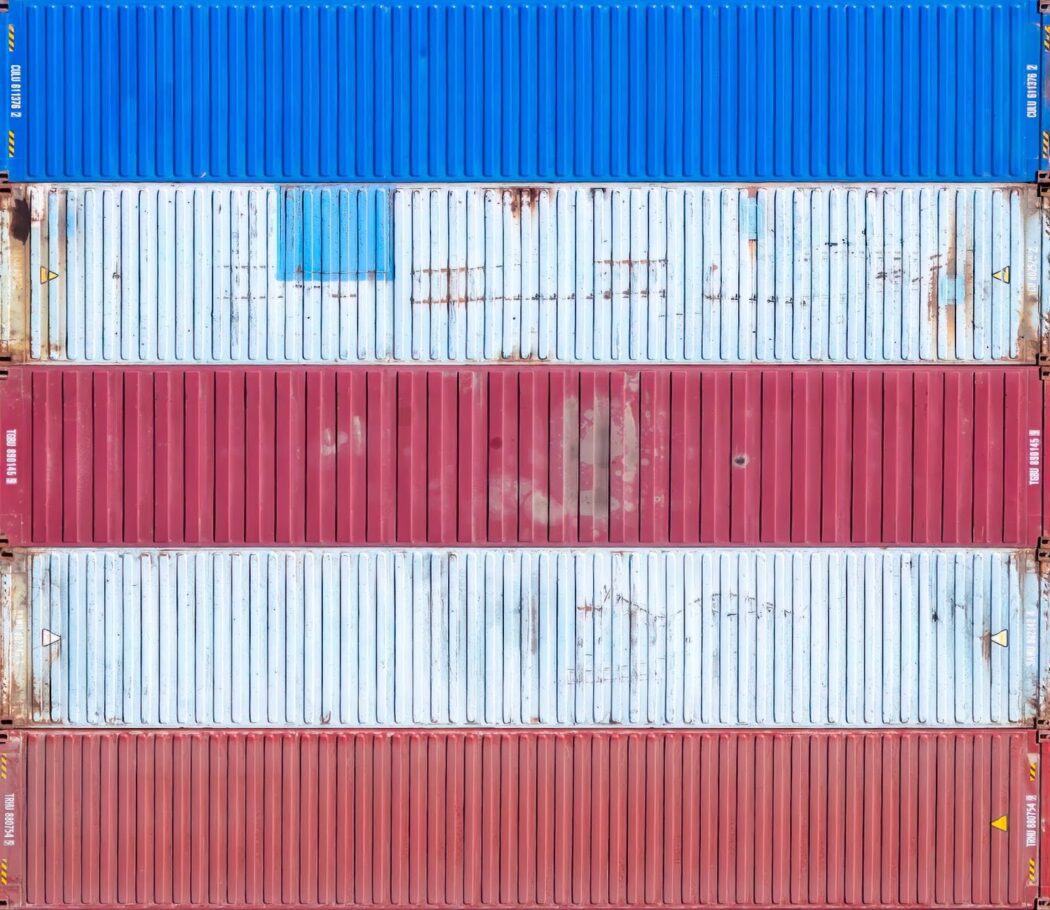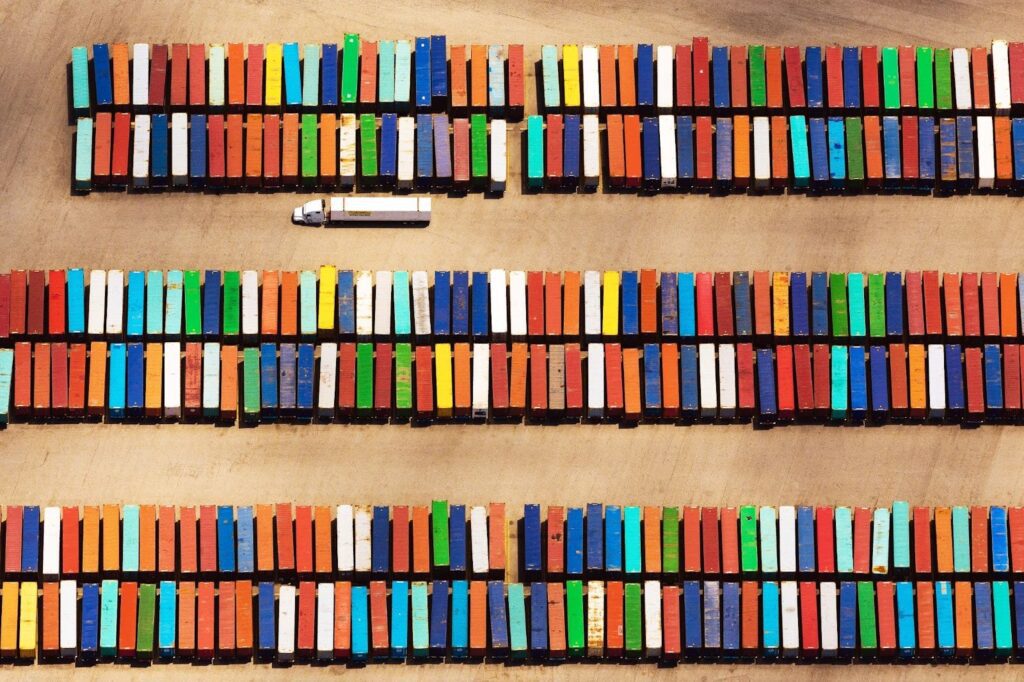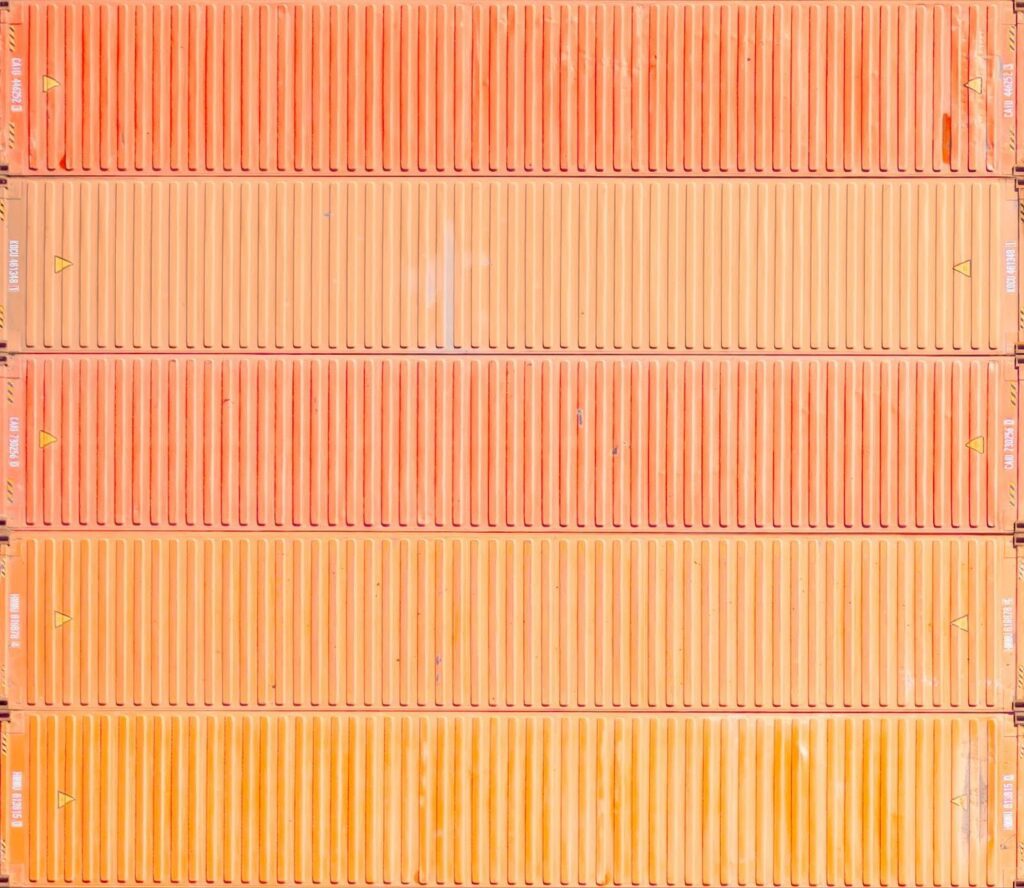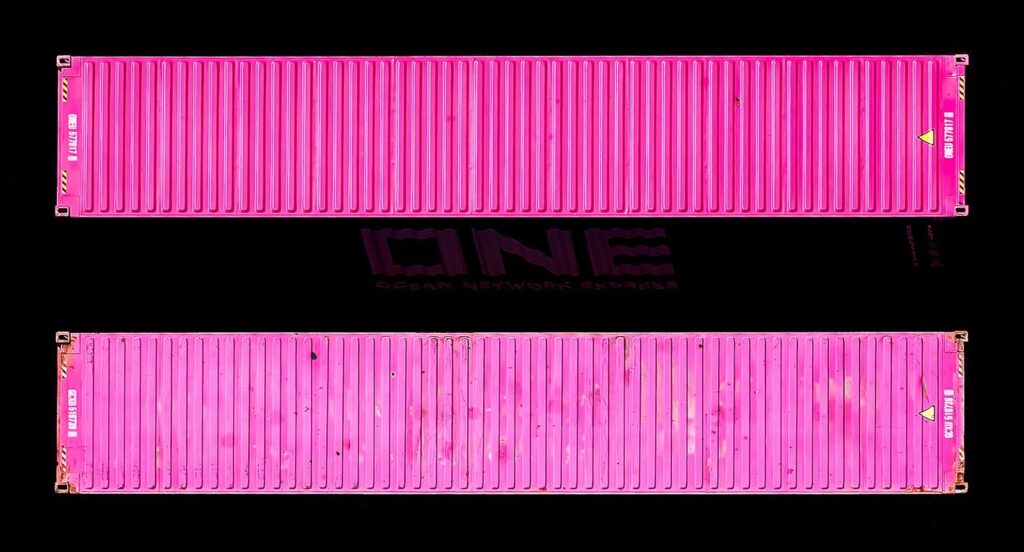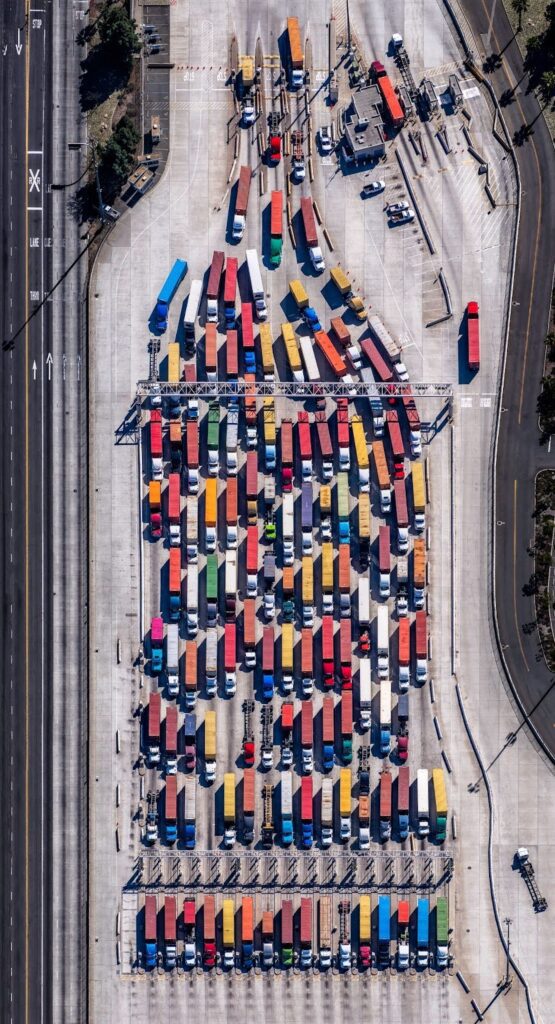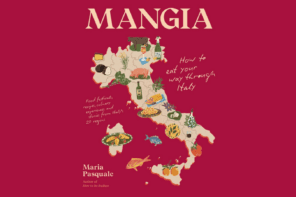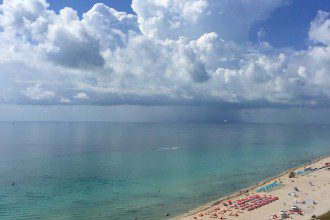Strength in Stripes is a striking meditation on order and spontaneity, transforming the rigid structure of industrial freight containers into a composition of color and rhythm. The bold interplay of red, white, and blue recalls both the controlled precision of Rothko’s canvases and the dynamic unpredictability of the built environment. Through his aerial photography, Donn Delson captures these intersections of function and abstraction, revealing an industrial language reimagined as immersive, large-scale art.
Imagine floating above the industrial arteries of global commerce at dawn, where the geometry of human enterprise becomes an unintentional canvas. Delson, a fine art photographer known for his aerial perspectives from doorless helicopters, transforms the ordinary into the extraordinary.
His latest exhibition, The Space Between, opening at Axiom Contemporary in Phoenix on February 22, presents a first-of-its-kind exploration of freight container ports from altitudes reaching up to 5,000 feet. From this vantage, function dissolves into form, and structured arrangements become evocative studies of repetition, color, and spatial relationships. The interplay of shadow and symmetry in Delson’s work recalls the concerns of minimalism and abstract expressionism, bridging contemporary photography with the formal rigor of high modernist painting.
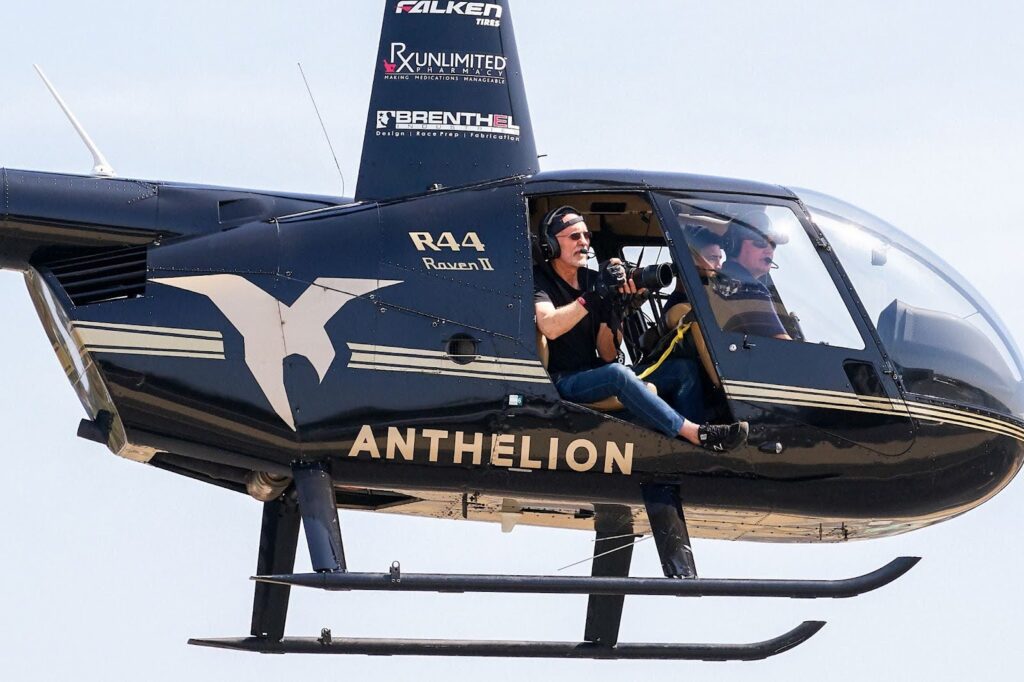
Aerial Alchemy: Transforming the Industrial into Art
Delson’s ability to reveal unexpected artistry in utilitarian environments aligns him with artists like Donald Judd and Piet Mondrian, who distilled structure into pure form, reducing reality to fundamental visual relationships while maintaining a poetic sensibility. In Xylophones, rows of shipping containers stack in rhythmic sequences, their colors resonating in ways reminiscent of Josef Albers’ exploration of color interaction. A lone white truck breaks the pattern, a deliberate disruption akin to Ellsworth Kelly’s use of contrast to command attention.
His methodology is one of patience and precision—waiting for the perfect moment when the early light sculpts volume and texture across the surfaces below. “There’s an integrity in these materials,” Delson remarks. “I seek to reveal them as they are, yet invite a wholly new interpretation.”
The Dance of Light and Shadow
Leaning far out from the doorless helicopter, Delson’s downward gaze transforms the industrial landscape into an immersive abstraction. The viewer is unanchored, free to explore the image without reference to scale. This dissolution of context—where a photograph ceases to be a document and becomes an autonomous aesthetic experience—draws parallels to the works of Bernd and Hilla Becher, who documented industrial structures with an almost typological rigor, yet left space for interpretation.
Delson’s work, light is not merely an illuminator but an active force in defining visual structure. In compositions like Strength in Stripes and the 21-piece Roth & Co. series—Delson’s photographic homage to Rothko—the bold interplay of color and the structured layering of stacked containers create a rhythmic depth that draws the viewer in, shifting perceptions between order and abstraction. The seemingly spontaneous arrangements mirror Rothko’s meditative color fields, while the regimented repetition recalls Agnes Martin’s meticulous rhythms, where structure and serenity coexist.
Beyond the Lens: A Conversation with the Viewer
Delson’s large-scale works—some reaching up to 60 inches by 90 inches—demand presence. Their scale shifts perception, inviting a dialogue between viewer and image. His Roth & Co. numbered series also references the formal purity of Agnes Martin, particularly in With My Back to the Wall (1997), where the repetition of linear elements fosters contemplation. Amidst this structured repetition, the erosion of surface—rust, wear, and patina—introduces a poetic impermanence, evoking the quiet transience of Martin’s works.
“Art isn’t just about observation; it’s about revelation,” Delson explains. “What seems structured and rigid at first becomes fluid upon deeper engagement.” This principle underpins The Space Between, challenging perceptions of industry and aesthetics, control, and spontaneity.
The Intersection of Art and Industry
Delson’s work is as much about conceptual inquiry as it is about visual splendor. His aerial vantage point offers a novel perspective, while probing the tension between order and randomness, utility, and beauty. In One by One, vibrant pink containers against a stark background evoke the language of color field painting, yet the visible signs of wear and use tell a deeper story of history and movement.
His work extends beyond pattern; it explores structure as an evolving entity. In Bottleneck, shot during the Covid era, the convergence of trucks and containers into a seemingly organic form speaks to the choreography of industry—both meticulously planned and inherently chaotic. This duality places Delson within a lineage of artists who see beyond function to expose the poetry in infrastructure.
Delson’s photography is more than an aerial viewpoint—it is an artistic meditation on form, order, and chaos. With each frame, the artist constructs a visual lexicon that transforms our perception of the built environment—shifting it from functional necessity to unintended artistry, rhythm, and abstraction. His work asks us to reconsider not just what we see, but how we see it—transforming the industrial into the ineffable, and the structured into the sublime.
The Space Between
February 22-March 15, 2025
Axiom Contemporary
Phoenix, AZ

